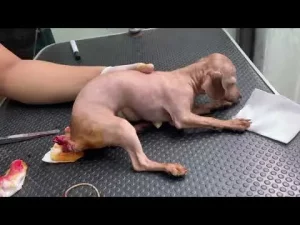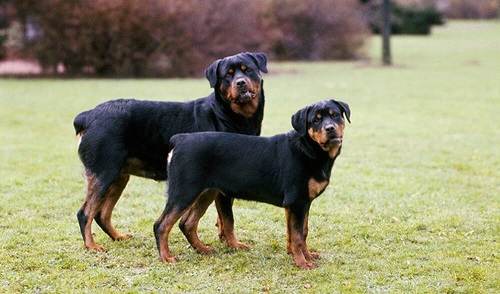
Introduction
Have you recently welcomed a tailless dog into your family? Perhaps your furry friend has undergone surgery and now requires special care and attention. In this comprehensive guide, we will walk you through the essential steps and considerations for providing post-surgery care for your tailless dog. Whether it’s managing pain, wound care, or creating a comfortable environment, we’ve got you covered.
Brief Explanation of Tailless Dogs
Tailless dogs, also known as bobtail dogs, are breeds that naturally have short or no tails. Some common tailless dog breeds include the Corgi, Australian Shepherd, and Rottweiler. While these dogs may not have a traditional tail, they still require the same love and care as any other dog. After surgery, it’s crucial to provide them with the necessary support and attention to ensure a smooth recovery.
Importance of Post-Surgery Care
Post-surgery care plays a vital role in a dog’s recovery process. It promotes healing, prevents complications, and ensures the overall well-being of your tailless dog. By following the proper care guidelines, you can help your furry companion regain their strength and return to their happy, energetic selves.
Preparing for Surgery
Before the surgery, it’s essential to have a consultation with your veterinarian. They will provide you with detailed instructions and information about the procedure. It’s crucial to follow any pre-surgery instructions, such as fasting your dog before the surgery and withholding certain medications. Additionally, ensure that your dog is up to date on their vaccinations to minimize the risk of infections.
Post-Surgery Environment

Creating a comfortable recovery space is vital for the well-being of your tailless dog. Set up a quiet and cozy area where they can rest without any disturbances. Consider providing soft bedding and blankets to make them feel secure. Temperature control is also crucial, as dogs can be sensitive to extreme temperatures. Keep the room at a comfortable temperature and avoid exposing them to drafts.
Pain Management
Proper pain management is essential for your tailless dog’s comfort during the recovery process. Follow your veterinarian’s instructions for administering prescribed pain medications. Recognize the signs of pain in your dog, such as restlessness, whimpering, or changes in behavior. If necessary, consult your veterinarian about alternative pain management options.
Wound Care
Keeping the surgical site clean is crucial for preventing infections. Follow your veterinarian’s instructions for wound care, including cleaning and dressing changes, if applicable. Keep a close eye on the surgical site for any signs of infection, such as redness, swelling, or discharge. If you notice any concerning signs, contact your veterinarian immediately.
Activity Restriction

During the recovery period, it’s essential to limit your dog’s physical activity. This restriction allows the surgical site to heal properly. Use a cone or other protective device to prevent your dog from licking or biting at the incision area. Gradually reintroduce exercise as advised by your veterinarian to avoid any complications.
Nutrition and Hydration
Proper nutrition and hydration are crucial for your tailless dog’s recovery. Provide a balanced and appropriate diet recommended by your veterinarian. Ensure they have access to fresh water at all times to stay hydrated. Depending on your dog’s condition, your veterinarian may suggest dietary adjustments to support their recovery.
Medication Administration
Administering prescribed medications correctly is vital for your dog’s recovery. Follow the dosage instructions provided by your veterinarian and ensure consistent administration. Monitor your dog for any potential side effects and communicate any concerns with your veterinarian promptly.
Monitoring Progress
Regular check-ups with your veterinarian are essential to monitor your tailless dog’s progress. Schedule follow-up appointments as advised and discuss any changes in behavior or physical condition. Open communication with your veterinarian is crucial for addressing any concerns or issues that may arise during the recovery process.
Preventing Self-Harm
To prevent self-harm, restrict your dog’s access to stairs, furniture, or any other hazards that could potentially cause injury. Supervise them during bathroom breaks to ensure they do not engage in any excessive physical activity. If necessary, use a crate or playpen to provide a safe and secure area for your dog to rest and recover.
Mental Stimulation and Entertainment

Engaging your tailless dog’s mind through puzzle toys or games is an excellent way to provide mental stimulation during the recovery period. Choose appropriate toys and activities that are safe and enjoyable for your dog. Additionally, maintain social interaction and spend quality time with your furry friend to keep their spirits high.
Rehabilitation and Physical Therapy
In some cases, professional therapy may be recommended for your tailless dog’s recovery. If advised by your veterinarian, consult with a professional therapist who specializes in canine rehabilitation. Assist with prescribed exercises or therapies to help your dog regain strength and mobility. Monitor their progress closely and adjust the rehabilitation plan as needed.
Managing Stress and Anxiety
Recognizing signs of stress or anxiety in your tailless dog is crucial during the recovery period. Utilize calming techniques or products, such as pheromone diffusers or anxiety wraps, to help alleviate anxiety. If your dog’s stress levels persist or worsen, consider seeking professional help from a veterinary behaviorist or a certified dog trainer.
Gradual Return to Normalcy

As your tailless dog progresses in their recovery journey, it’s important to gradually return to their normal routines and activities. Monitor them closely for any signs of post-surgery complications and consult your veterinarian if you have any concerns. Celebrate milestones and progress along the way, and remember to be patient and consistent throughout the recovery process.
Conclusion
In conclusion, caring for a tailless dog after surgery requires patience, dedication, and a holistic approach to their well-being. From pain management and wound care to nutrition and rehabilitation, every aspect of their recovery is crucial. By following the guidelines provided by your veterinarian and providing a loving and supportive environment, you can help your tailless dog make a successful and smooth recovery. Remember, your furry friend is counting on you to be their advocate and caregiver throughout this journey.
